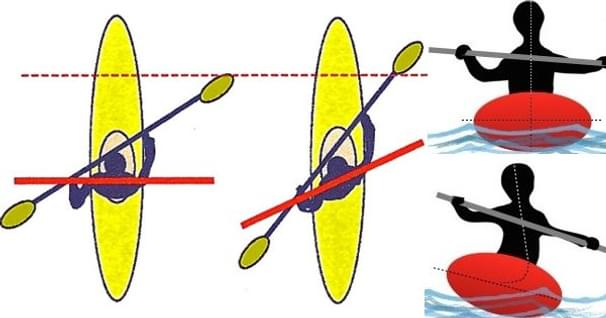Learning the Draw and Cross Bow Draw Strokes
We're gonna have a look at two strokes that can be used in a variety of ways that are essential for the stern and bow paddlers in tandem as well as solo paddlers.
Bow Stroke
We're going to look at the draw stroke first. You can use it solo to go sideways, you can use in combination and you can use it to turn the front of the boat or to stop the front turn. It's quite a straightforward stroke. What you’re first gonna have to do is turn your chest, maybe even your knee, so it's facing the direction I'm going to pull. So what I'm doing is reaching out to the side, pulling through the water with a bottom hand and at the same time I'm pushing with the top. The real key component here is you have to release your fingers otherwise it will stop you from getting a really good push. Then to get it out to the water before it hits the boat, you can slash it to the back.
Now there are lots of variations on this stroke. You can actually turn and slice the boat to cuddle back through the water but that won't work in every situation. This is a useful stroke when we're moving. The variation would be keeping the paddle completely in the water and sculling or slicing the paddle back to the starting position. But that only works in a specific situation. The basic draw stroke works in all situations.
Cross Bow Draw Stroke
So the opposite of the draw is used at the bow of the boat, and you can use it solo to turn the boat, is the cross bow draw. Come up to the halfway point with your stationary thumb on the top and keep that thumb on the top and swing the whole paddle around. If you noticed, most of the swing is coming out to the chest. Put your paddle in the water, pull and out.
Doing this solo makes for a really powerful turn. If you coupled it with the sweep stroke on your on-side and you move your knees across to face the off-side it makes it more powerful. Very often this is called the outside pivot turn. This cross deck draw or cross deck bow draw makes for a very very powerful turn or, if it's necessary, as a correction stroke. Combined with a reverse sweep at the stern it makes for a tight turn on the spot.
The classic mistake with this stroke is as you come across, instead of keeping this thumb on top, which gives you a really powerful position because if you notice I'm not actually pulling with my arms I'm pulling with my body, is that as they come across they twist the paddle over so their thumb ends up down. This is extremely weak. You're not really effective with the body and your arm is an extremely weak position. So the telltale is that the thumb is still on the top.
Related Articles
One of the big reasons stand up paddling has been exploding in popularity, is that on a very basic…
Technically speaking, Webster's defines "Body English" as: the bodily motions made in a usually…
This video demonstrates the forward sweep and the reverse sweep, emphasizing that the power for these…
This video describes the bracing stroke for your stand up board and will help you learn to stand on your…



